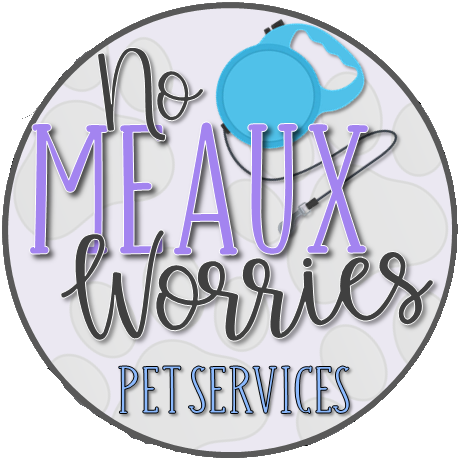Creating a Safe Haven: How to Pet-Proof Your Yard
Practical Tips for Ensuring Your Outdoor Space is Secure and Pet-Friendly
Your yard can be a great space for pets to enjoy the outdoors, get some exercise, and explore. However, it's important to ensure this area is safe and secure for them. Pet-proofing your yard helps prevent accidents, escape attempts, and exposure to harmful substances. Here’s a guide to help you create a pet-friendly outdoor environment.
Secure the Perimeter
The first step in pet-proofing your yard is ensuring that your pets can’t escape. Secure the perimeter with a sturdy fence by considering the following :
Fence Height: For dogs that like to jump, ensure the fence is tall enough to prevent them from leaping over. Typically, a 6-foot fence works well for most dogs.
Check for Gaps: Ensure there are no gaps or holes where pets can squeeze through. Even small gaps can be a problem, especially for smaller breeds or curious cats.
Underground Boundaries: Some pets may try to dig their way out. Install a wire mesh or bury the fence a few inches underground to prevent this.
Gates: Make sure gates are always closed and have a secure latch that pets cannot open.
Eliminate Toxic Plants
Research the plants in your yard and replace any harmful ones with pet-safe alternatives like sunflowers, roses, or marigolds. Many common garden plants are toxic to pets if ingested, including:
Hydrangeas
Azaleas
Tulips
Daffodils
Sago Palms
Create a Designated Play Area
Creating a specific area for your pet to play can keep them safe and entertained. Consider:
Soft Ground Cover: Use pet-friendly grass or artificial turf that’s gentle on paws and easy to clean.
Shade: Ensure there’s plenty of shade to protect pets from overheating. Trees, pergolas, or dog houses can provide shelter from the sun.
Toys: Keep a variety of durable, weather-resistant toys in the yard to keep your pets engaged and discourage destructive behaviors.
Avoid Dangerous Garden Products
Fertilizers, pesticides, and herbicides can be harmful to pets if ingested. When pet-proofing your yard, opt for:
Pet-Safe Products: Use products labeled as pet-safe and follow the manufacturer's instructions carefully.
Storage: Store garden chemicals securely, out of your pet’s reach.
Natural Alternatives: Consider natural pest control methods, like diatomaceous earth or neem oil, which are safer for pets.
Provide Fresh Water
Always ensure your pets have access to fresh water when they are outside. If you have a water feature like a pond or fountain, make sure it's pet-friendly by avoiding harmful chemicals.
Be Mindful of Wildlife
Wildlife can pose a threat to pets, and pets can also endanger wildlife. Here’s how to manage both:
Deterring Wildlife: Use humane methods like motion-activated sprinklers or lights to deter wildlife from entering your yard.
Supervision: Supervise your pets, especially during dawn and dusk when wildlife is most active.
Bird Feeders: Place bird feeders high and out of reach to prevent your pets from attempting to get at them.
Install Pet-Safe Landscaping
Certain landscaping features can enhance your yard while keeping it safe for pets:
Mulch: Choose a pet-friendly mulch like cedar or pine instead of cocoa mulch, which is toxic to dogs.
Paths: Create designated paths for your pets to roam, protecting both your plants and your pet’s paws.
Raised Beds: Use raised garden beds to keep pets out of flower or vegetable patches, reducing the risk of ingestion or trampling.
Lighting and Security Cameras
Proper lighting is important for keeping your pets safe, especially at night:
Motion Sensors: Install motion sensor lights to keep the yard well-lit at night, making it easier to spot potential hazards.
Cameras: Consider installing security cameras to monitor your pets when you’re not home, allowing you to quickly respond to any issues.
Regular Maintenance
A well-maintained yard is crucial for pet safety. Regularly check the yard for:
Debris: Remove any sharp objects, fallen branches, or other debris that could cause injury.
Pests: Watch for signs of pests like ticks or snakes and take appropriate action.
Water Hazards: If you have a pool, pond, or fountain, ensure your pets can’t accidentally fall in. Pool covers and barriers are good preventative measures.
Training and Supervision
Even the safest yard can pose risks if pets are unsupervised or untrained. It’s important to:
Teach Boundaries: Train your pets to understand the boundaries of your yard. Commands like “stay” and “come” can be lifesavers.
Supervision: Always supervise your pets, especially in new or recently modified environments, to ensure they’re safe and behaving appropriately.
Pet-proofing your yard is a proactive way to ensure your pets can enjoy the outdoors safely. By securing the perimeter, removing toxic plants, and using pet-safe products, you can create a haven for your furry friends. Regular maintenance, combined with training and supervision, will keep your yard a safe space where pets can explore and play without worry.

